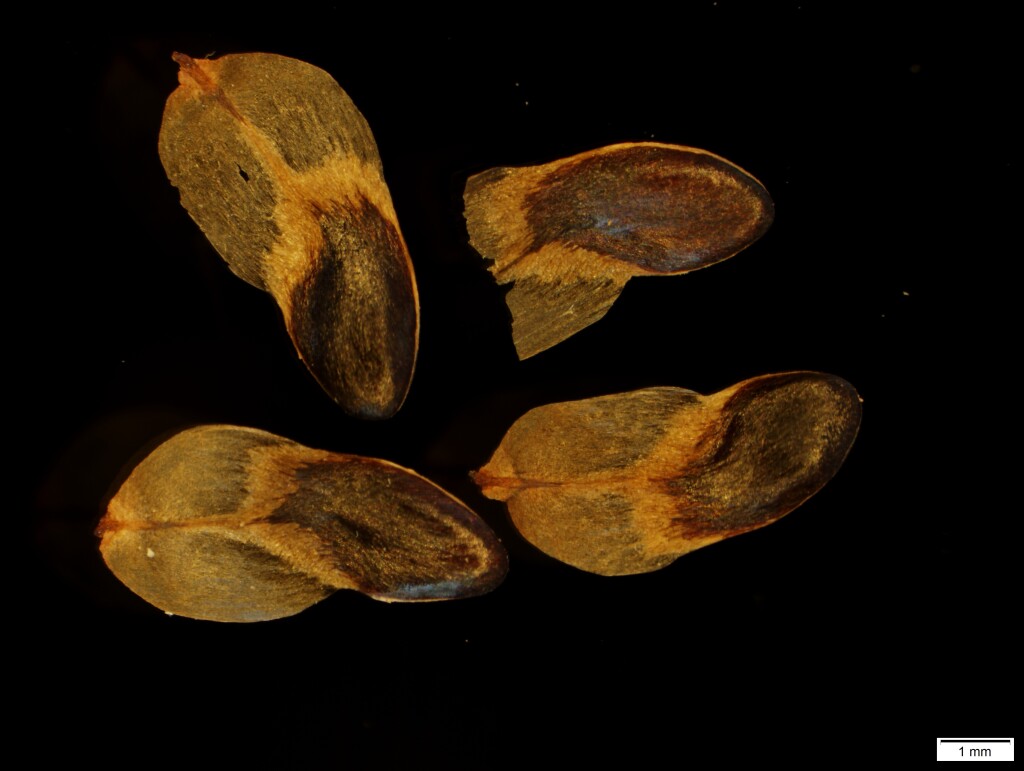Allocasuarina grampiana
L.A.S.Johnson Grampians SheaokDioecious shrub 1–4 m high; penultimate branchlets woody. Bark smooth. Branchlets ascending, to 15 cm long; internodes 5–12 mm long, 0.7–1 mm diam., smooth, glabrous, with waxy bloom; ribs angular or rounded. Teeth 6 or 7, erect or rarely slightly spreading, c. 0.5 mm long, occasionally overlapping when young, not withered. Male spikes moniliform, 1–4 cm long, 5 or 6 whorls per cm; anther c. 0.7 mm long; bracteoles persistent. Cones cylindric, longer than broad, with short sterile apex to 3 mm long; peduncle 2–6 mm long; cone body 13–35 mm long, 7–9 mm diam.; valves in several rows, hardly extending beyond cone body, broadly acute to obtuse, pyramidal protuberance shorter than bracteole body. Winged seeds c. 5 mm long, black. Flowers Mar., Sep.–Dec.
GGr, DunT. Known only from sandstone outcrops in the Grampians (e.g. Victoria Range, Mt William).
Branchlets of Allocasuarina grampiana are characterized by young articles with a strong waxy bloom, angular to rounded ribs and erect teeth. The cones are narrow and often quite elongate, and have a sterile terminal portion.
Closely resembles Allocasuarina monilifera (L.A.S. Johnson) L.A.S. Johnson which occurs in Tasmania and on some Bass Strait islands.
Entwisle, T.J. (1996). Casuarinaceae. In: Walsh, N.G.; Entwisle, T.J., Flora of Victoria Vol. 3, Dicotyledons Winteraceae to Myrtaceae, pp. 90–101. Inkata Press, Melbourne.
 Spinning
Spinning
